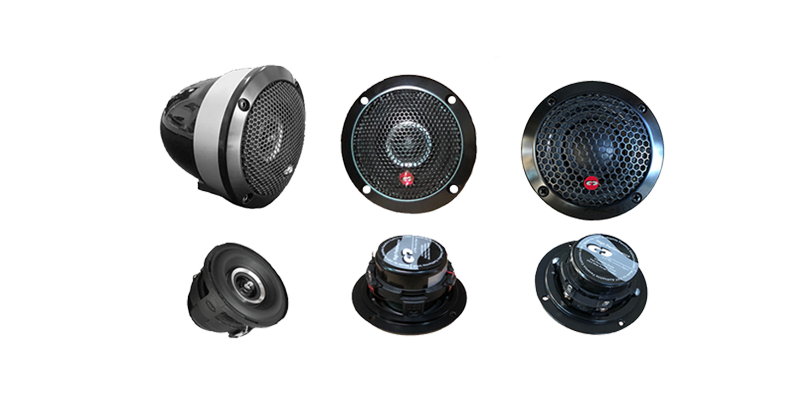
For many years, speaker designers around the world have used very similar system architecture for loudspeaker system design: tweeters handled high frequencies, midranges reproduced the midrange and woofers took care of the bass. Because this is what the driver designs of the day were capable of reproducing with consistency and clarity. Then crossovers and many hours of listening and experimentation get applied to blend the different drivers together and adjust them until they sound as musical as possible.
The design team at CDT Audio considers this to be their signature development for the advancement of car audio design: CDT Audio Hybrid wide-band drivers can now smoothly and cleanly handle frequencies from +/- 250 Hz - 20KHz and beyond - on their own! This is the frequency range normally covered by tweeters AND midrange drivers. Not anymore! So what does this mean to speaker system design and why is it a big deal? Thanks to the unique wide-range abilities of these new CDT drivers, there is no need for complicated crossovers to interfere with musical reproduction in the most sensitive audio range. With literally NO crossover parts interfering with the musical signal, the drivers are truly free to produce spacious, unadulterated, lifelike music. Furthermore, these benefits are magnified! Unlike any other speaker system, not only do they have this marvelous ability to reproduce such a broad, clean frequency range, but thanks to their small size, they actually perform as a point-source, enabling them to create the most realistic listening experience you will ever hear.
CDT wide-band drivers have an amazing 6-8 Octave range: covering 250Hz to 20,000Hz and beyond with no crossover of any kind in that bandwidth. This purity of reproduction enables your ear/brain mechanism to perceive a more lifelike image than any other audio system yet devised. You will literally hear the difference! There just is NO need for any interfering crossover parts to help blend mid-tweeter frequencies together. This ability is what creates a more “lifelike” sound experience
When you listen to music, your ears pick up a lot of information all at once. Your remarkable ear/brain mechanism sorts through all of these sounds at lightning speed. The net result is a perception in your brain of where in space these musical sounds are coming from and what instruments, voices and spaces these sounds are attributed to. The brain ’s amazing imaging ability is the result of instantaneous analysis of many factors, including timing and angle of reception, relative volume, the frequency range and strength of the sounds, clarity, detail - and so much more. Our ability to hear and perceive the reality of music reproduction is one of the miracles of life.
Because there are NO additional electrical components between the tweeter and the midrange, there is no extra circuitry to mess up the musical reproduction though the ultra-critical listening range of 250 - 20KHz and beyond. CDT Audio wide band drivers handle that range with clarity, smoothness, and exceptionally broad soundstage.
<< Back to Wideband Categories
To Wideband Component Systems >>